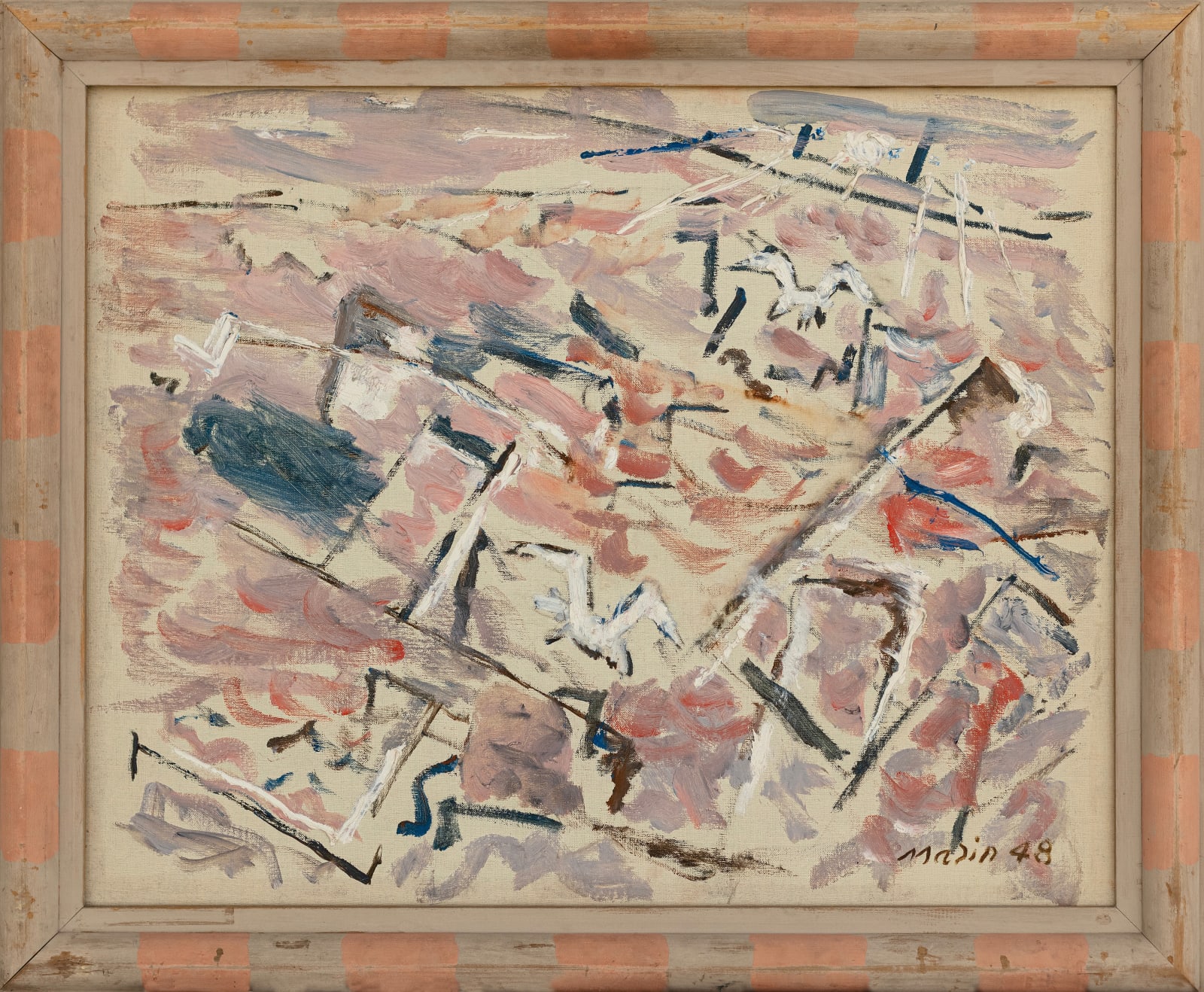John Marin American, 1870-1953
55.9 x 71.1 cm
Schoelkopf Gallery is the exclusive worldwide representative of the John Marin Foundation.
This work retains the original hand-painted artist's frame.
Sea in Red, Version I belongs to a pair of paintings John Marin produced in 1948 of an abstract seascape. That same year, legendary critic Clement Greenberg, champion of the Abstract Expressionist movement that was at its pinnacle at this time, wrote in The Nation:
“John Marin has the reputation, earned in the course of forty years, of being the greatest living American painter. He is certainly one of the best artists who ever handled a brush in this country. And if it is not beyond all doubt that he is the best painter alive in America at this moment, he assuredly has to be taken into consideration when we ask who is.” [1]
While Marin’s peers in the early American modernist period had begun to suffer both commercially and critically by the post-war years, Marin had, from his time with Alfred Stieglitz in the early years of the century, continued to sell well and consistently. John Marin stands, among very few in a generation of artists, as a voice that clarified, intensified, and grew in strength throughout his career. This consistency sometimes obscures the radicalism of his work: when he undertook the Weehawken Sequence in 1910-16, he crafted some of the most daring compositions in North America. He later gave up oil painting in favor of watercolor, but for two other periods in what would become a long and venerable career: around 1920, and again from 1947-53. The consistency of his vision between oil and watercolor is important, but notably he used the two mediums for different purposes. Clearly, these two ends informed one another, as he thinned oil to translucence reminiscent of watercolor or applied watercolor in thick masses straight from the tube. All of these practices informed his singular voice: a semi-abstract embrace of geometric and calligraphic designs into an organic, explosive whole.
In his review in The Nation, Greenberg identified the second version of Sea in Red as proof of his thesis: “There are…some good canvases in the show: Sea in Red – Version No. 2,” and described its virtue: “The oils are stronger, ampler, more temperamental, and this is not altogether because their medium is heavier . . . The evidence here is of great mastery. The artist still lays his oil pigments on with a good deal of the purity and thinness of watercolor and, again like a watercolorist, uses the bare canvas as another color. But the oil pictures have a much more emphatic presence, and Marin’s emotion is bodied forth more variously, broadly, and palpably." [2] Greenberg’s plaudit is surprising coming from the iconoclast extraordinaire, but it is exceedingly apt: John Marin set the stage for Abstract Expressionism and future developments in twentieth-century painting.
[1] Review of an Exhibition of John Marin, The Nation, December 25, 1948.
[2] Review of an Exhibition of John Marin, The Nation, December 25, 1948.
Provenance
The artist; to
Estate of the artist, 1953; to
The John Marin Foundation, 2023 until the present
Exhibitions
An American Place, New York, John Marin, December 7, 1948-January 31, 1949
American Academy of Arts and Letters, New York, John Marin, January 15-February 14, 1954, no. 23
Menconi + Schoelkopf, New York, Marin and the Critics, February 24-April 24, 2020, no. 49
Schoelkopf Gallery, New York, John Marin: Communing with the Colossal, October 24-December 12, 2025Literature
Sheldon Reich, John Marin: A Stylistic Analysis and Catalogue Raisonné, Tucson: University of Arizona Press, 1970, vol. II, p. 763, no. 48.26, illus.
Jonathan Spies, Marin and the Critics, New York: Menconi + Schoelkopf, 2020, p. 117, no. 49, illus. p. 101
Subscribe to our mailing list to receive updates from the gallery
* denotes required fields
We will process the personal data you have supplied in accordance with our privacy policy (available on request). You can unsubscribe or change your preferences at any time by clicking the link in our emails.

